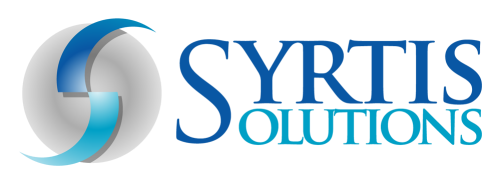
01 Feb LEGISLATIVE EFFORTS FOR TPL AND IMPROPER PAYMENTS IN MEDICAID
Over the last fifty years, Medicaid has helped deliver health services to the most vulnerable populations in the United States. As member enrollment surges, Medicaid TPL and fiscal responsibility have been problematic. To address these challenges, numerous legislative efforts have occurred to curb fraud, waste, and abuse. Unfortunately, these measures have done little to protect program integrity and Medicaid’s improper payment rate continues to climb.
Improper Payments and Medicaid TPL Legislation
The federal government’s initiatives to deal with improper claims payments and improve TPL processes fall under four categories:
- Evaluating the risk of fraud
- Determining the impact of TPL
- Calling for more reporting
- Data sharing
Here is an overview of the legislation aimed towards improving Medicaid TPL and reducing improper payments.
1974 – ERISA
Congress passed the Employee Retirement Income Security Act (ERISA) in 1974. This law was aimed at self-insured companies to ensure that they abided by the same health insurance criteria as other large group plans. In addition, it placed them under Medicaid TPL requirements.
2002 – IPIA
The Improper Payments Information Act (IPIA), passed in 2002, called for agencies to actively identify programs or activities susceptible to high levels of improper payments. Agencies were now required to make an annual report to Congress pertaining to overpayments or underpayments and steps taken to resolve such issues. In compliance with the IPIA, the Payment Error Rate Measurement (PERM) was developed. PERM reviews Medicaid and CHIP data to measure improper payments and estimate program-level error rates.
2005 – The Deficit Reduction Act
The Deficit Reduction Act (DRA) added more entities to the list of those considered third parties. By law, all entities defined as third parties are required to comply with Medicaid TPL processes, which includes supplying beneficiary eligibility data to states (much like ERISA dictates for self-insured plans).
2006 – Medicaid Integrity Program
The DRA also introduced the Medicaid Integrity Program (MIP) under section 1936 of the Social Security Act. The MIP was the first comprehensive federal initiative to deal with fraud, waste, and abuse. It allowed contractors to review provider activities, audit claims, identify improper payments, and educate providers on integrity issues. It also provided support to states to address fraud and abuse.
2008 – Qualifying Individual Program Supplemental Funding Act
The Qualifying Individual (QI) Program Supplemental Funding Act of 2008 modified state participation criteria of the Public Assistance Reporting Information System (PARIS). It called for states to link their eligibility systems through PARIS, providing data for matching purposes across participating entities. CMS found that beneficiaries crossing state lines were one source of improper payments because a mechanism did not exist for states to exchange data and “match” beneficiary information.
2009 – Executive Order 13520
Executive Order 13520 was an attempt to decrease Medicaid improper payments. It looked to intensify efforts to eliminate payment errors, waste, fraud, and abuse while at the same time ensuring that Medicaid and other federal programs would continue to serve their beneficiaries. EO 13520 tracked federal programs with the highest dollar amount of improper payments and set up reduction and recovery target rates.
2010 – Improper Payments Elimination and Recovery Act
Congress passed the Improper Payments Elimination and Recovery Act of 2010 to improve data sharing, coordination between state agencies and third parties, and increase reporting requirements. Some of the measures taken include:
- Amendment of the IPIA to call for the leader of each federal agency to review and identify vulnerabilities in their programs that could result in improper payments
- Modifications of the criteria related to improper payment estimations
- Requirement of a report from agencies as to whether it has ” sufficient resources with respect to internal controls, human capital, and information systems and other infrastructure to prevent improper payments”
2015 – Fraud Reduction and Data Analytics Act
The Fraud Reduction and Data Analytics Act called for the Office of Management and Budget to establish new guidelines for federal agencies to improve TPL management. Under the act, agencies needed to “establish financial and administrative controls to identify and assess fraud risks.” Furthermore, agencies were required to submit annual reports to Congress regarding their progression on these efforts.
2015 – Federal Improper Payments Coordination Act
Congress also passed the Federal Improper Payments Coordination Act in 2015. It dealt with administrative procedures, reporting guidelines, and data-sharing to improve TPL and cost avoidance. Under the legislation, the judicial branch, legislative branch, and state government agencies managing federal programs were permited to use the U.S. Treasury Department’s Do Not Pay Program.
2015 – Medicare Access and CHIP Reauthorization Act
The Medicare Access and CHIP Reauthorization Act of 2015 consisted of several sections relevant to Medicaid programs, including a section impacting TPL data sharing. It instructed the Secretary of HHS to explore “incentives for states to work with the Secretary under the Medicare-Medicaid Data Match Program.”
ProTPL Saves Medicaid TPL Millions
Discovering Medicaid TPL is very difficult for program administrators as they struggle with bad quality data that is not up to date, usable, or accurate. Since they are unable to effectively discover TPL before claims are paid, improper payments are costing Medicaid billions of dollars. Medicaid plans acknowledge that cost avoidance makes more sense than pay and chase, but the ability to execute it effectively has not been widely available. Now, with the help of Syrtis Solutions’ ProTPL, payers of last resort are able to cost avoid pharmacy and medical claims on the front end. Their solution, ProTPL, reduces the need for recovery and the associated expenses while cost avoiding payments. Those involved in the process of Medicaid claims adjudication have been working with the best tools they had available. Now, they have new and better tools through Syrtis.
